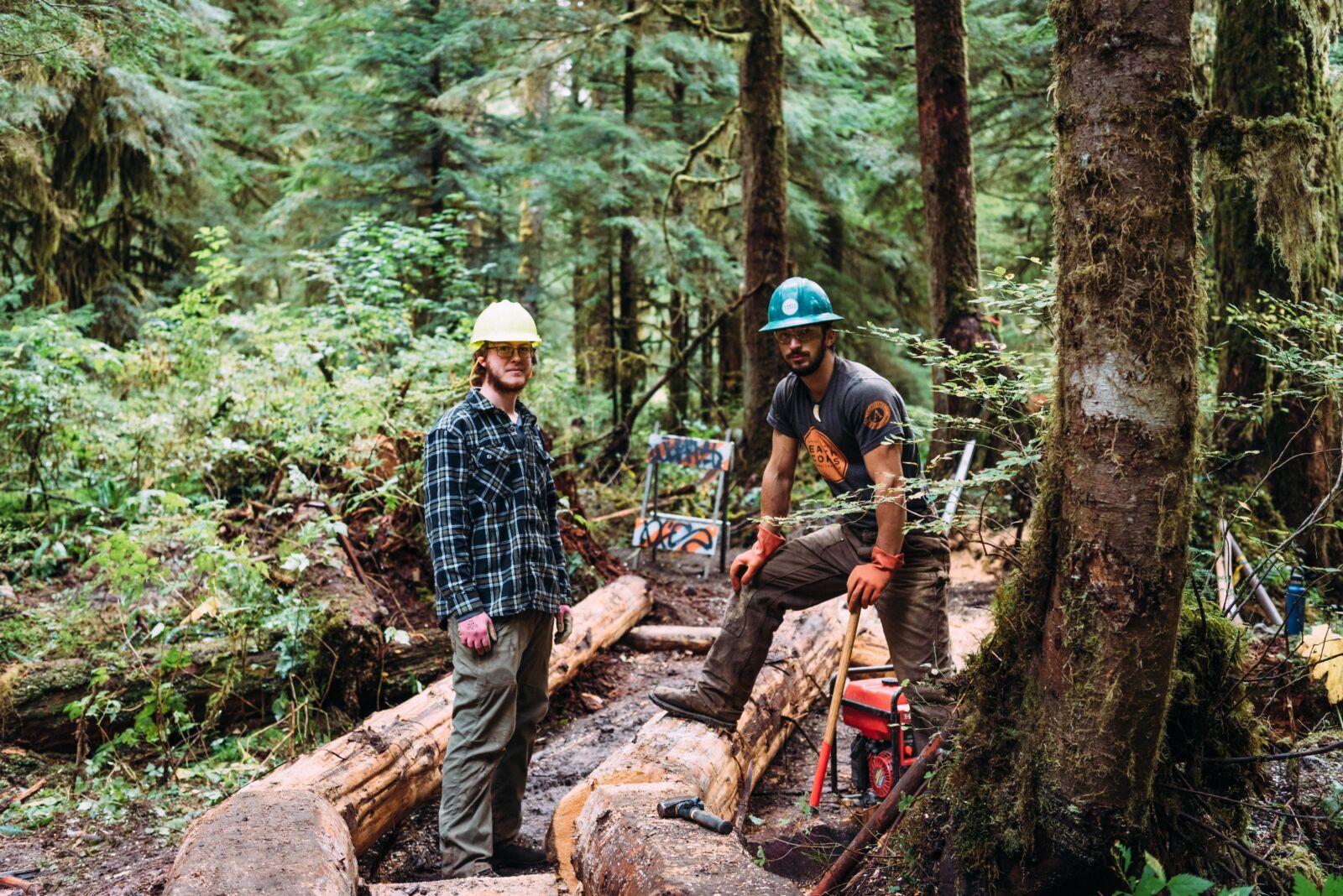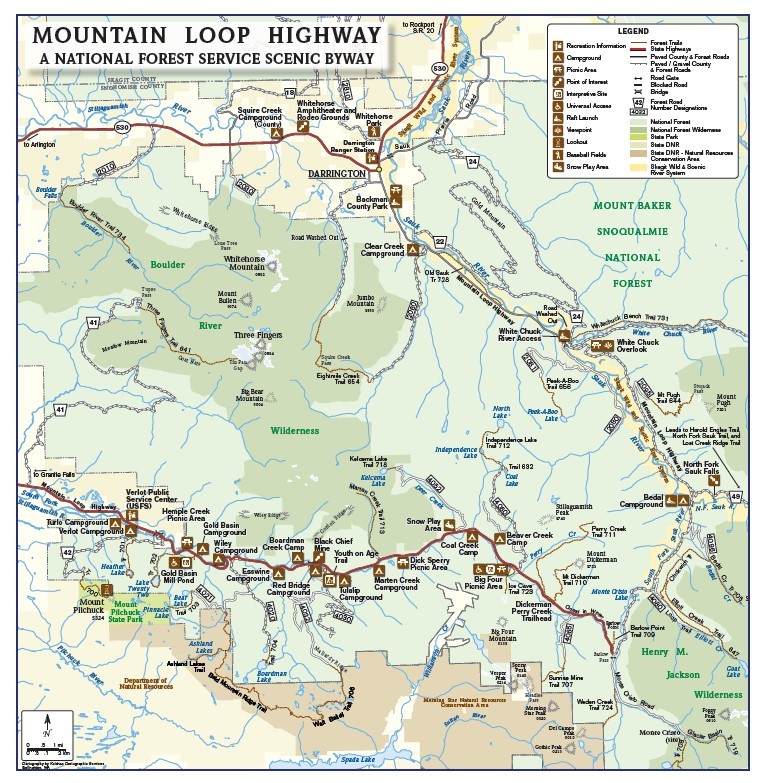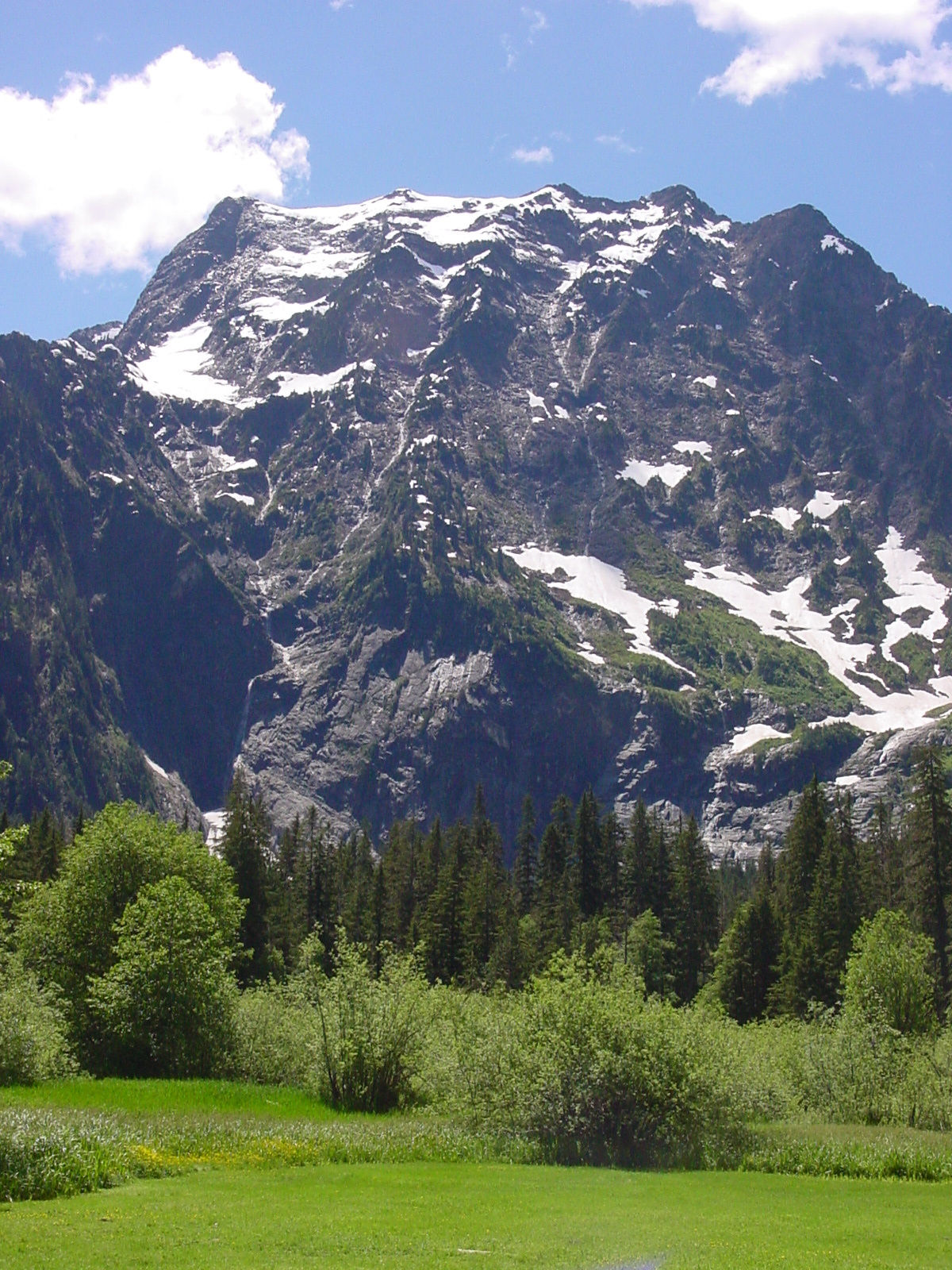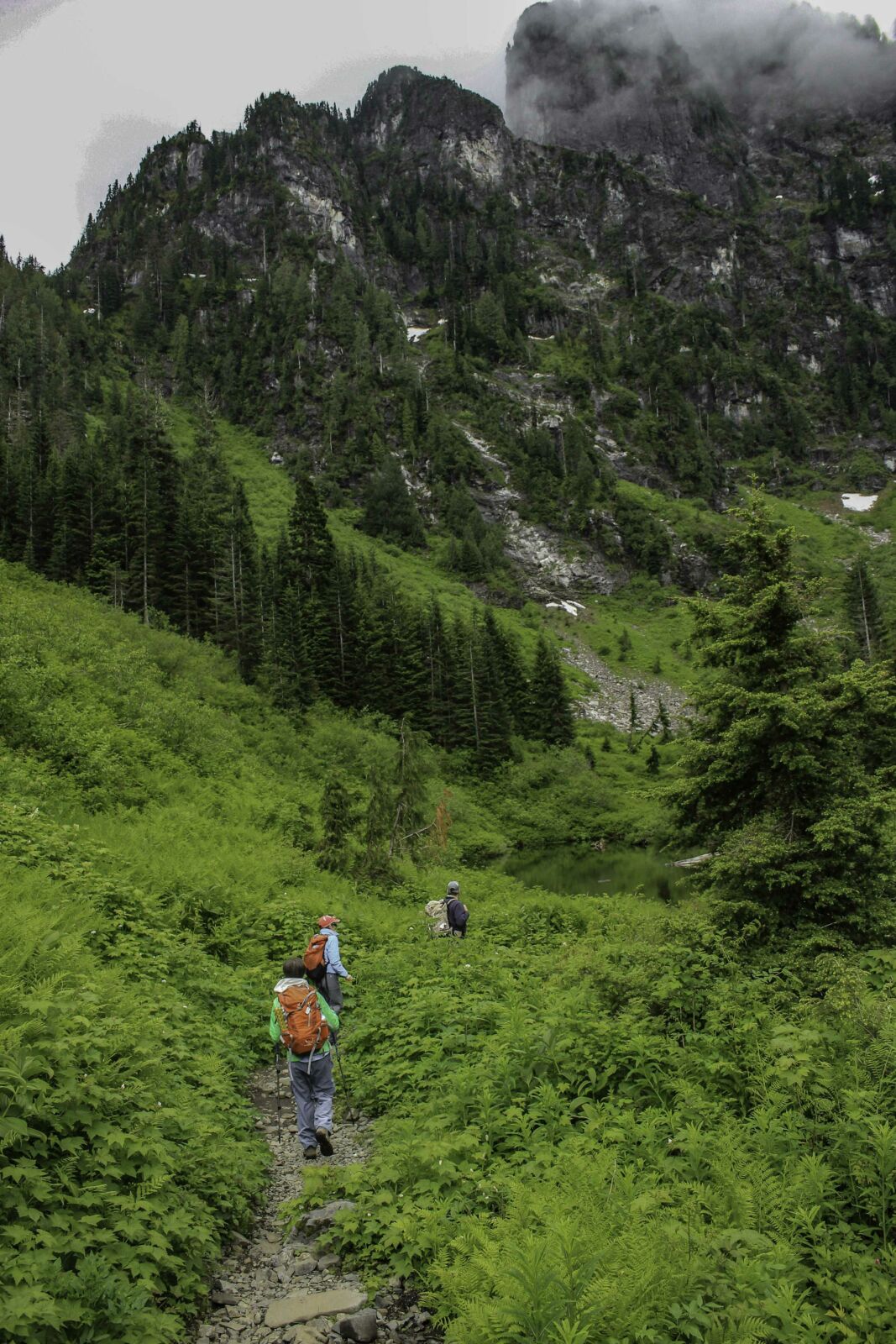Big Four Ice Caves
This popular recreation area will see needed improvements including a restored trail bridge over the South Fork Stillaguamish River, an upgraded accessible elevated boardwalk and improved trail conditions. The Big Four Picnic Area will receive new accessible grills and picnic tables, bear proof garbage cans, toilets, and interpretive signs about the area. Improvements are scheduled to take place between 2022 – 2024.
Mt. Pilchuck Trail
The 2.7 mile trail leads to a 5,324-foot summit and has tremendous views of the Cascades, Olympics, and Puget Sound. The trail is usually snow-covered until midsummer and is very popular on a clear day. The trail will be improved with some maintenance occurring on puncheon and stairways. The Pilchuck Road leading to the trailhead will also be improved in locations making access to the trail easier for all vehicles. Improvements are scheduled to take place between 2022 – 2025.
Lake Twenty-Two Trail
This 2.7 mile long trail follows Twenty-Two Creek through old-growth forests and a large talus slope. The trail is used year-round and is always very crowded on summer weekends. The trail will be improved and the trail bridge over Twenty-two Creek will be repaired. Improvements are scheduled to take place in 2022 and 2023.





